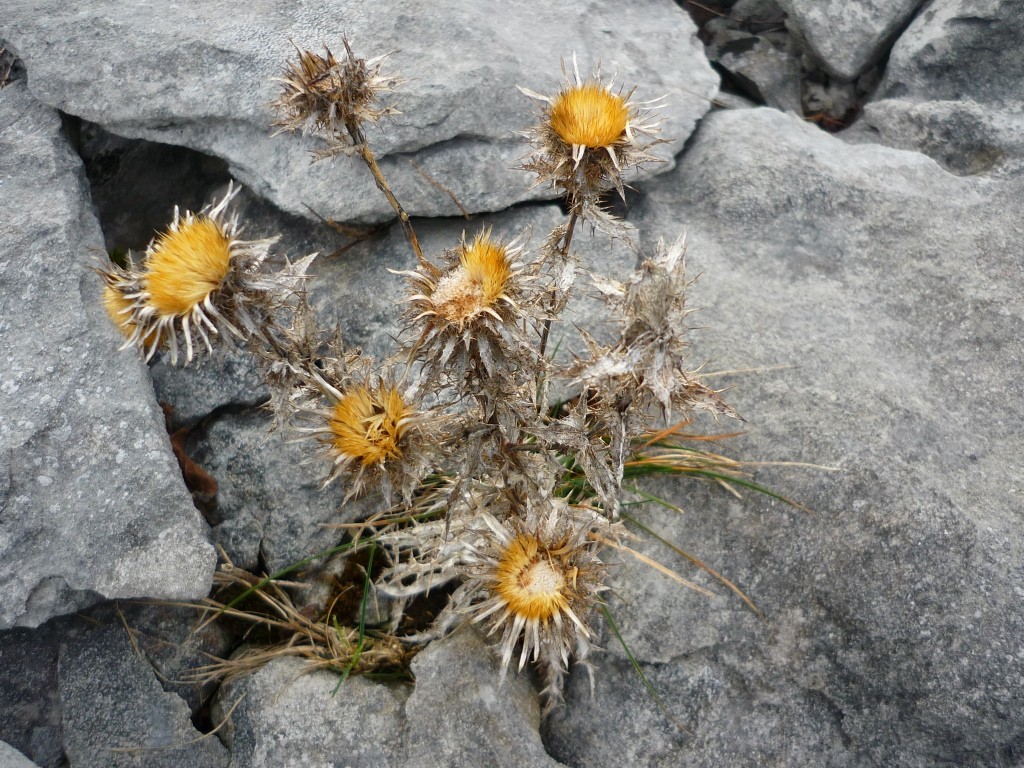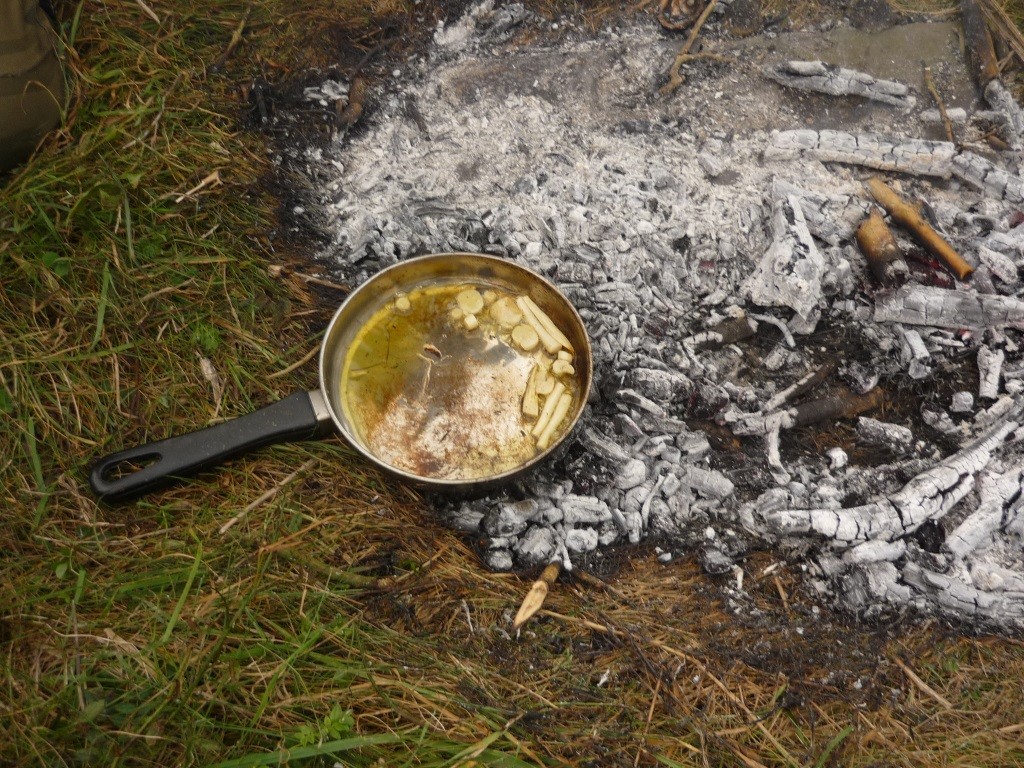By Sean Fagan

Beautiful and practical - even in winter. The dead, fluffy seed heads of this carline thistle, Carlina vulgaris, are a spark-friendly tinder and source of insulation for gloves, socks and hat (Photo: Sean Fagan - The Burren, west Ireland).
.
.
The Bushcraft Value of Plant ID Skills in Winter...
.
Winter can lose a lot of its bite when you can positively identify many herbaceous plant and tree species. You will be able to select the best firewood, construct the best shelter, eat heartily on edible roots, and even make some nice herbal teas - to name a few benefits with good plant identification skills in winter.
Thankfully, wild plants (and wild animals) have a healthy disregard for the Gregorian Calendar.
The idea that spring (from March onwards) is somehow the unofficial start-time of fresh plant growth (with subsequent blooming) is simply untrue.
Many wild plants (For example, coltsfoot, winter heliotrope and lesser Celendine) appear as early as December.
And many plants that inhabit the floors of temperate woodlands have evolved to emerge, sprawl their fresh leaves into the winter air, then successfully bloom before the trees above them start to leaf and cast a dark shade.
It’s not just herbaceous plants that can be early starters.
The pinkish-white, floral flush of cherry trees, for example, are often well under way in early January.
In effect there are floral mavericks everywhere.
There is far more happening out there in winter than is often perceived - you'll be surprised, stunned even, about what the hidden depths of wintertime can offer.
This post is an excerpt from 7 Reasons to Camp in Winter
.
.
.
"People don't notice whether it's winter or summer when they're happy" Anton Chekhov
.
.
Related articles on this website:
.
*Check us out on Instagram, Twitter & Facebook for more outdoor-related topics.

Recent Comments